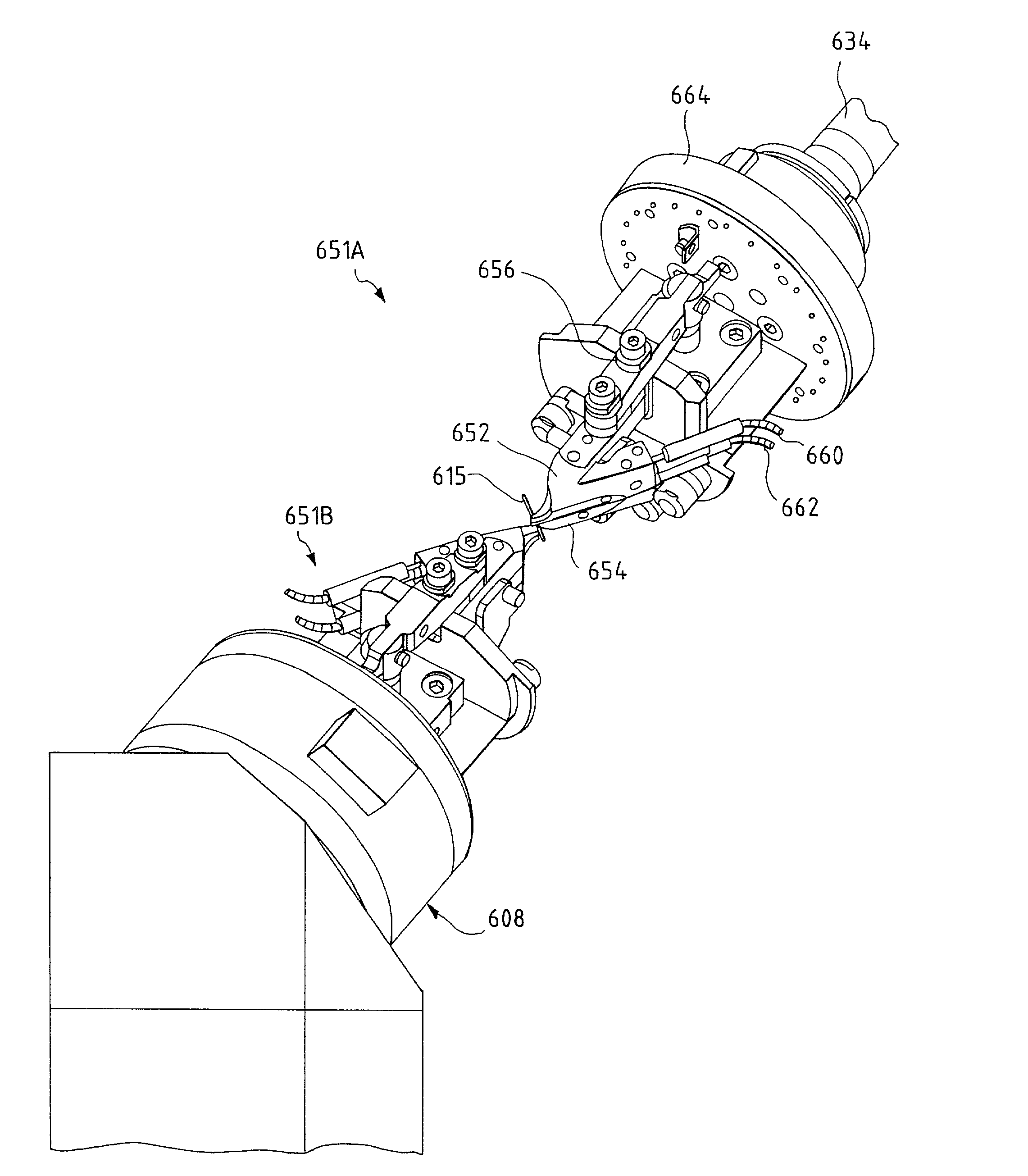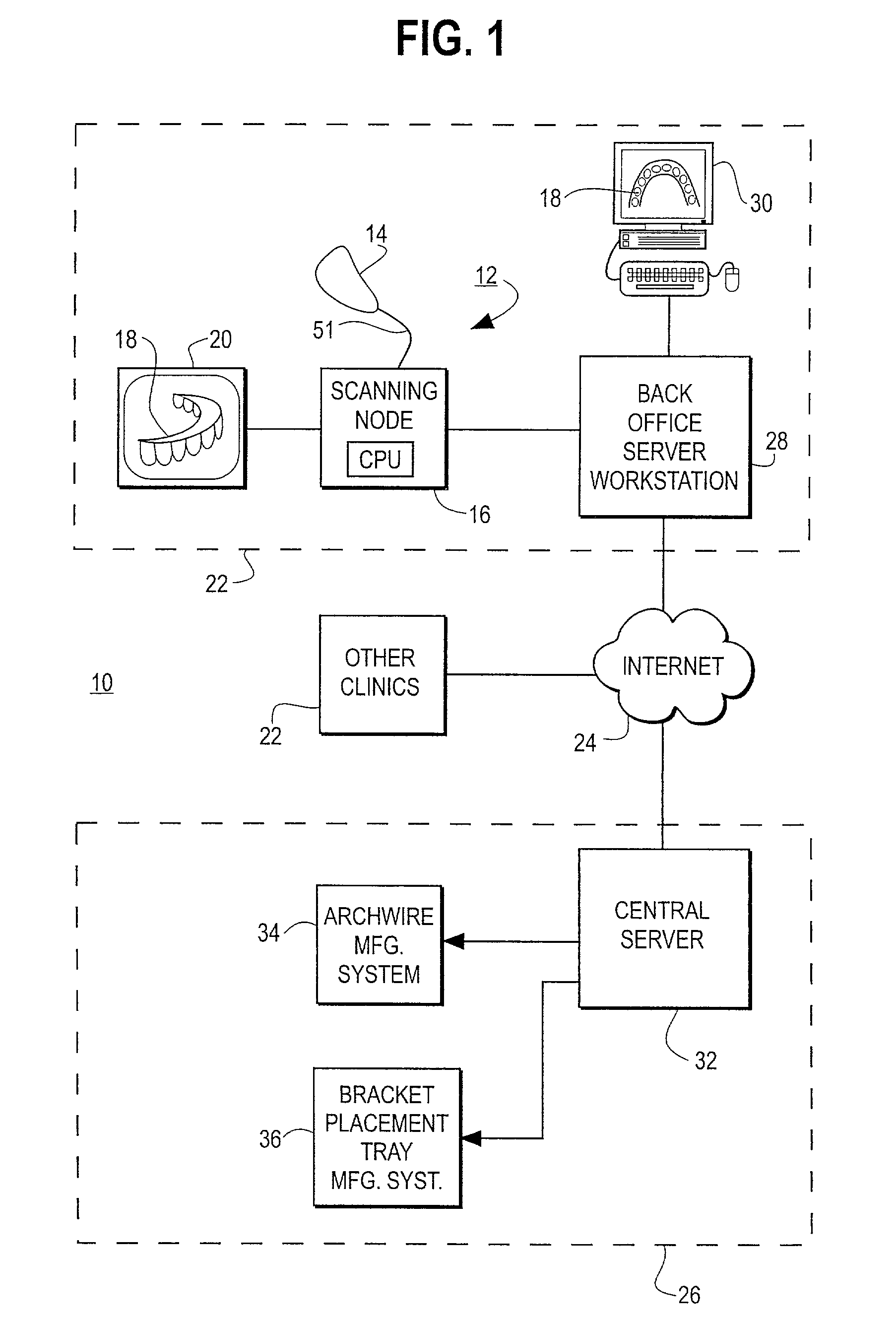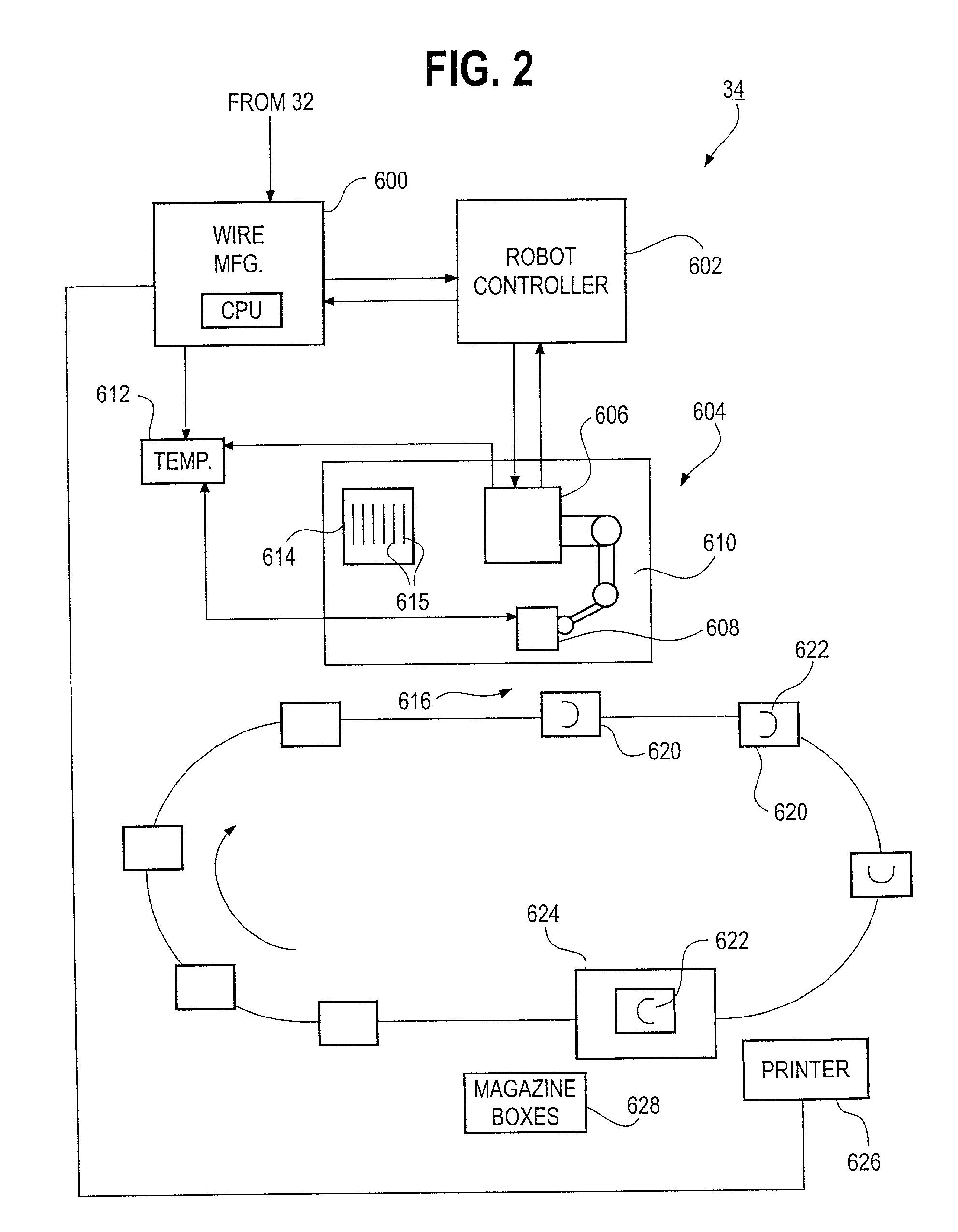Robot and method for bending orthodontic archwires and other medical devices
a robot and orthodontic technology, applied in metal-working feeding devices, shaping tools, instruments, etc., can solve the problems of twisting bends in the wires, wire bending apparatus, limited to a customized bracket approach to orthodontics,
- Summary
- Abstract
- Description
- Claims
- Application Information
AI Technical Summary
Problems solved by technology
Method used
Image
Examples
Embodiment Construction
[0066] Part 1. Overview
[0067] FIG. 1 is an illustration of an orthodontic care system 10 incorporating a hand-held scanner system 12. The scanner system 12 includes a hand-held scanner 14 that is used by the orthodontist to acquire three-dimensional information of the dentition and associated anatomical structures of a patient. The images are processed in a scanning node or workstation 16 having a central processing unit, such as a general-purpose computer. The scanning node 16, either alone or in combination with a back-office server 28, generates a three-dimensional computer model 18 of the dentition and provides the orthodontist with a base of information to plan treatment for the patient. The model 18 is displayed to the user on a monitor 20 connected to the scanning node 16.
[0068] The orthodontic care system consists of a plurality of orthodontic clinics 22 which are linked via the Internet or other suitable communications medium 24 (such as the public switched telephone networ...
PUM
| Property | Measurement | Unit |
|---|---|---|
| length | aaaaa | aaaaa |
| degrees of freedom | aaaaa | aaaaa |
| separation distance | aaaaa | aaaaa |
Abstract
Description
Claims
Application Information
 Login to View More
Login to View More - R&D
- Intellectual Property
- Life Sciences
- Materials
- Tech Scout
- Unparalleled Data Quality
- Higher Quality Content
- 60% Fewer Hallucinations
Browse by: Latest US Patents, China's latest patents, Technical Efficacy Thesaurus, Application Domain, Technology Topic, Popular Technical Reports.
© 2025 PatSnap. All rights reserved.Legal|Privacy policy|Modern Slavery Act Transparency Statement|Sitemap|About US| Contact US: help@patsnap.com



